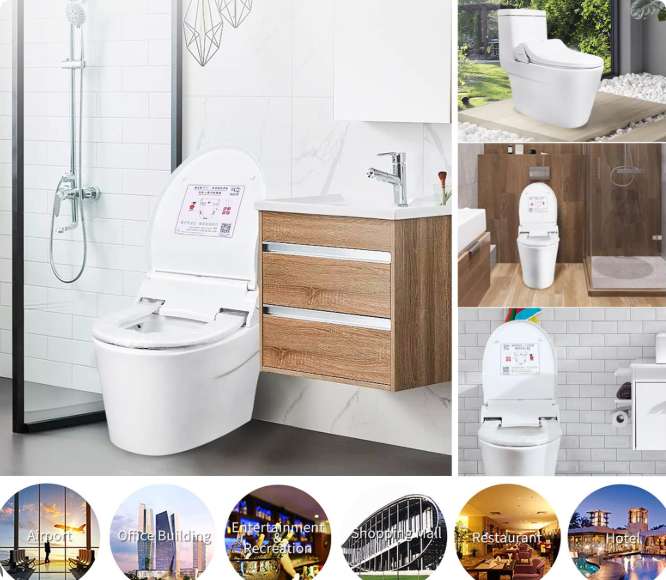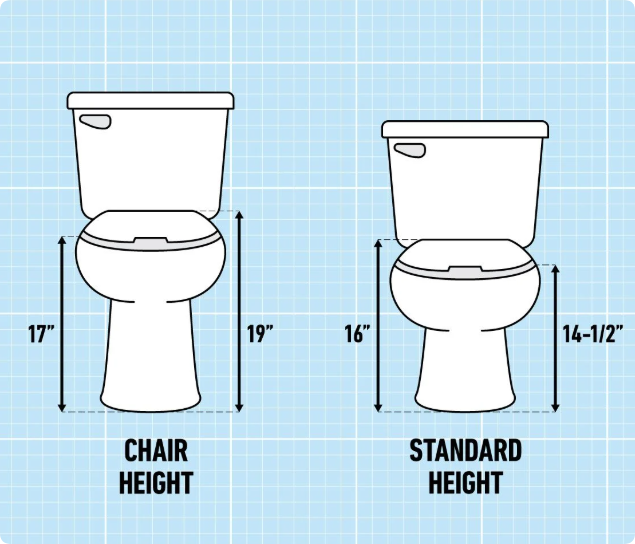Toilets are essential fixtures in both residential and commercial settings, but they serve different needs and environments. While the primary function remains the same—providing a hygienic waste disposal system—the design, durability, and features vary significantly between commercial and residential toilets. This article will explore these differences in-depth, providing a comparison of the key aspects such as size, materials, water efficiency, installation requirements, and overall functionality. Whether you’re a B2B purchaser for a large-scale commercial project or a small-scale retailer, understanding these distinctions can help you make the right choice for your business.
What Are Commercial and Residential Toilets?
Before diving into the specifics, it’s important to define what we mean by “commercial” and “residential” toilets.

- Residential Toilets are designed for use in homes, apartments, and other private living spaces. These toilets are typically built for personal use and are designed to blend seamlessly with home interiors.
- Commercial Toilets are designed for public or business environments such as offices, restaurants, airports, schools, and other high-traffic spaces. These toilets are built to withstand heavy use and often need to comply with commercial building codes and accessibility standards.
While the differences are clear, both types must prioritize comfort, hygiene, and efficiency. However, commercial toilets are subjected to more stringent requirements due to the higher volume of usage.
Key Differences Between Commercial and Residential Toilets
To better understand the differences, let’s break down the most significant factors that distinguish commercial toilets from residential ones.
1. Size and Dimensions
Commercial toilets are often larger to accommodate different user needs and comply with accessibility standards (e.g., the Americans with Disabilities Act in the U.S.). Residential toilets, on the other hand, tend to be more compact to fit within the constraints of home bathrooms.

| Aspect | Residential Toilets | Commercial Toilets |
|---|---|---|
| Dimensions | Smaller, more compact | Larger to allow for easier accessibility |
| Seat Height | Typically lower (~14–15 inches) | Higher seat height for comfort (~17–19 inches) |
| Bowl Shape | Varies (round or elongated) | More often elongated for better comfort |
In residential bathrooms, space is often limited, so the toilets are typically designed to be more compact. In contrast, commercial toilets are designed to accommodate a wide variety of users, which often means they are taller and bulkier.
2. Durability and Materials
Commercial toilets are designed to endure heavy, frequent use and require more durable materials than residential toilets. The ceramic used in commercial toilets is usually thicker and more resilient to avoid breakage under pressure, making them ideal for high-traffic areas.
Residential toilets are built to withstand regular use but do not necessarily need to be as robust as commercial models. The ceramic may be thinner, and the toilet bowls may not be as heavily reinforced.
In a commercial setting, toilets must meet rigorous standards for durability, often incorporating high-quality glazes that prevent staining and scratching. Residential toilets focus more on aesthetics and comfort, with materials that complement the interior design of the bathroom.
3. Water Efficiency
Water efficiency is another key difference. With water conservation becoming increasingly important globally, both residential and commercial toilets are required to meet certain standards for water use. However, commercial toilets are often designed with water-saving features that allow them to handle heavy usage while conserving water.
| Feature | Residential Toilets | Commercial Toilets |
|---|---|---|
| Water Use | Typically use 1.28 to 1.6 gallons per flush (GPF) | Often use 1.0 to 1.28 gallons per flush (GPF) |
| Flush Mechanism | Standard gravity flush or dual-flush | High-efficiency flush systems for continuous use |
| Water Efficiency Rating | Meets local water efficiency codes | Designed for high-frequency use while conserving water |
Commercial toilets often use less water per flush compared to residential toilets to maintain efficiency in high-traffic areas. Many modern commercial toilets feature advanced flushing systems that are both water-efficient and powerful enough to handle larger volumes of waste.
4. Flush Mechanism
Flush mechanisms are another area of divergence. While residential toilets may use a standard gravity-flush or dual-flush system, commercial toilets often employ more robust flushing mechanisms, such as pressure-assisted or vacuum-assisted systems, which are better suited to handle the higher frequency of use in commercial settings.
- Gravity Flush: Found in most residential toilets, using the force of gravity to move waste through the system.
- Pressure-Assisted Flush: Common in commercial toilets, using pressurized air to force the waste through the toilet bowl more efficiently.
In a commercial setting, the choice of flush mechanism also relates to the cost of water usage and the need for toilets to remain functional with minimal maintenance, given the high number of users.
5. Maintenance and Longevity
Commercial toilets are engineered to minimize the need for maintenance, thanks to their durable construction and water-efficient mechanisms. These toilets often have larger, more accessible parts, which makes repairs easier and less frequent. Residential toilets, while built for longevity, may not have the same ease of maintenance due to the smaller and more intricate components.
6. Cost
Due to their specialized design, materials, and features, commercial toilets tend to be more expensive than their residential counterparts. However, for large-scale commercial procurement, the long-term savings in maintenance and water efficiency often make the investment worthwhile.
In contrast, residential toilets offer a more affordable option for homeowners, with a focus on comfort, design, and personal preferences rather than industrial-grade durability and functionality.
7. Compliance and Regulations
One of the most significant differences lies in the regulatory requirements. Commercial toilets must adhere to strict codes and standards, including accessibility (e.g., ADA compliance in the U.S.) and sanitation regulations. This means that commercial toilets are often designed to accommodate a wider variety of users, including those with disabilities.
- Accessibility: Commercial toilets must be larger, with higher seats and grab bars for ease of use, while residential toilets often cater to standard user heights and needs.
- Compliance with Standards: Different countries have varying regulations for toilets, including water-saving rules, anti-bacterial coatings, and waste disposal methods.
Conclusion: Making the Right Choice for Your Business
Understanding the key differences between commercial and residential toilets is essential when making purchasing decisions. Whether you’re looking to equip a high-traffic office building or designing a home bathroom, the right toilet can significantly affect both user experience and long-term maintenance costs.
For B2B purchasers, here’s a quick recap of the key considerations:
- Durability and Materials: Commercial toilets are more robust and resistant to wear and tear.
- Water Efficiency: Commercial toilets are more water-efficient, crucial for saving costs in high-use environments.
- Size and Accessibility: Commercial toilets offer more flexibility in terms of size, height, and ADA-compliance.
- Flush Mechanisms: Commercial models often use pressure-assisted or vacuum-assisted systems for superior performance.
- Maintenance: Commercial toilets are designed for easier maintenance and longer intervals between repairs.
At DANUBETOILET, we specialize in producing high-quality ceramic sanitary products for both residential and commercial applications. Whether you’re looking for durable, water-efficient toilets for commercial spaces or stylish, comfortable options for residential projects, we offer both ODM and OEM solutions to meet your specific needs.
By understanding the distinct requirements for each type of toilet, you can make a more informed choice for your business or residential project.
